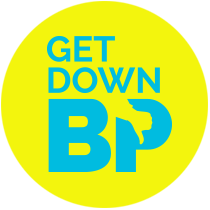World Stroke Day 2017 is on October 29. Stroke refers to when the blood flow to part of the brain is cut off, often resulting in permanent damage to the affected areas. According to the World Stroke Organization, stroke is the leading cause of death and disability globally. One in six individuals will experience a stroke; this equates to approximately 17 million strokes per year, resulting in 6.5 million deaths.
Dr. Nadia Khan, Professor in UBC’s Division of General Internal Medicine and CHÉOS Scientist, investigates chronic disease management and prevention strategies and cardiovascular risk factors, including those related to stroke.

This year, Dr. Khan published two studies which investigated whether there were differences between Canadians of South Asian, Chinese, and other heritage with respect to the rates and treatment of stroke.
Using validated surname analyses to group individuals, the two studies used administrative data for patients in B.C. and Ontario who were hospitalized for stroke.
“As two of the fastest-growing ethnic populations in Canada, identifying and understanding differences in the burden and treatment of stroke between groups is important,” said Dr. Khan “Not only as a way of improving targeted prevention and treatment campaigns but also to ensure equitable access to care for all Canadians.”
Incidence by ethnicity
The first article was published in PloS One in May. It found that ischemic stroke incidence was highest in white individuals while the incidence of intracerebral hemorrhage—bleeding within the brain—was highest in those of Chinese descent. The study also found that South Asian patients (originating from India, Pakistan, Bangladesh, or Sri Lanka) were younger at the time of both intracerebral hemorrhage and ischemic stroke.
“One of the positive findings of our research was that, in the time frame we analyzed [1998 to 2010], the rates of both of these kinds of stroke declined in all groups” said Dr. Khan.
“This is distinct from studies in India and China where the incidence of stroke has increased over the past few decades.”
Secondary prevention
Using the same ethnic categories, the second study looked at differences in the use of medications to prevent a second stroke in older Canadians (66 years of age or older).
The study found that, following both ischemic stroke and intracerebral hemorrhage, Chinese Canadians were less likely to fill prescriptions for the optimal combination of preventative medications. In contrast, South Asians were as likely or more likely than other patients to receive treatment for secondary prevention following both kinds of stroke.
“Given the substantial yet unrealized benefits associated with these therapies, there is urgent need to improve secondary prevention therapy prescribing and/or primary adherence in stroke populations, especially among Chinese Canadian populations” said Dr. Khan.
“The reasons some groups do not receive or fill prescriptions are not clear—there may be biases among prescribing physicians, greater intolerances to medications, or there may be cultural differences in the patient’s willingness to fill prescriptions due to cost, preferences for alternative therapies, or mistrust of Western medications.”
The authors posited that South Asian patients are likely prescribed preventative medications more aggressively by health care providers due to that group’s higher risk for vascular events.
A group effort
Although Dr. Khan was the lead author on the studies, both included collaboration with the University of Alberta, McGill University, University of Calgary, the University of Toronto, and the Institute for Clinical Evaluative Sciences.
 The list of authors also includes Dr. Anita Palepu, Division Head for General Internal Medicine at Providence Health Care and CHÉOS Scientist.
The list of authors also includes Dr. Anita Palepu, Division Head for General Internal Medicine at Providence Health Care and CHÉOS Scientist.
Dr. Khan is also involved with GetdownBP, an interactive, community-level campaign that aims to help people learn about lowering their blood pressure, which is the number one way of preventing stroke. Dr. Khan is the current President of Hypertension Canada, one of the partner organizations affiliated with this campaign.
—
Khan NA, McAlister FA, Pilote L, Palepu A, Quan H, Hill MD, Fang J, Kapral MK. Secondary prevention treatment after acute stroke in older South Asian, Chinese and other Canadians: a retrospective data analysis. CMAJ Open. 2017 Sep 11;5(3):E702-9.
Khan NA, McAlister FA, Pilote L, Palepu A, Quan H, Hill MD, Fang J, Kapral MK. Temporal trends in stroke incidence in South Asian, Chinese and white patients: A population-based analysis. PLoS ONE. 2017 May;12(5):e0175556.



